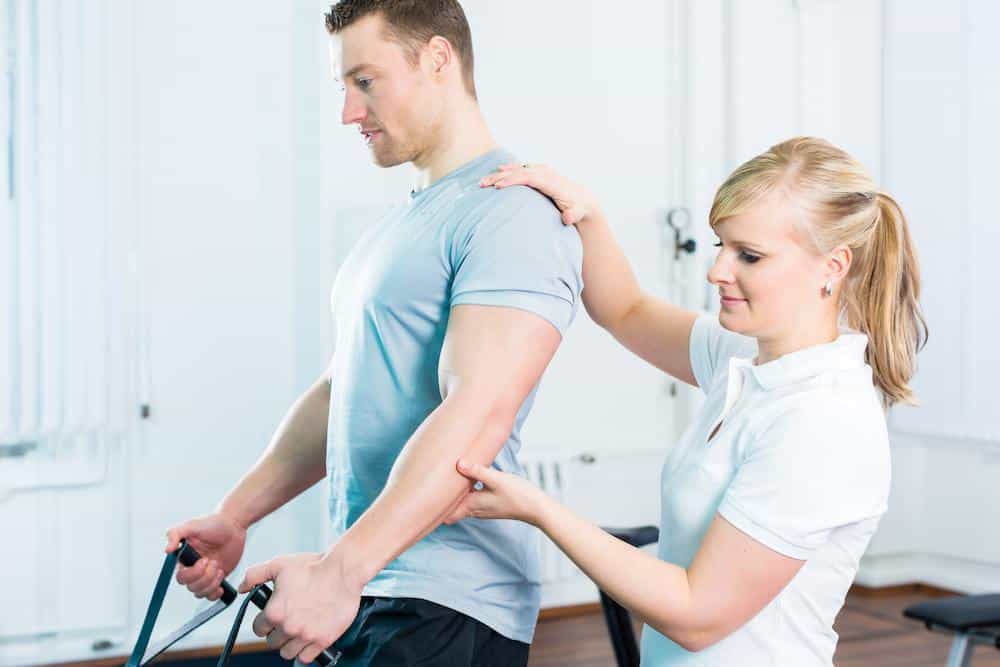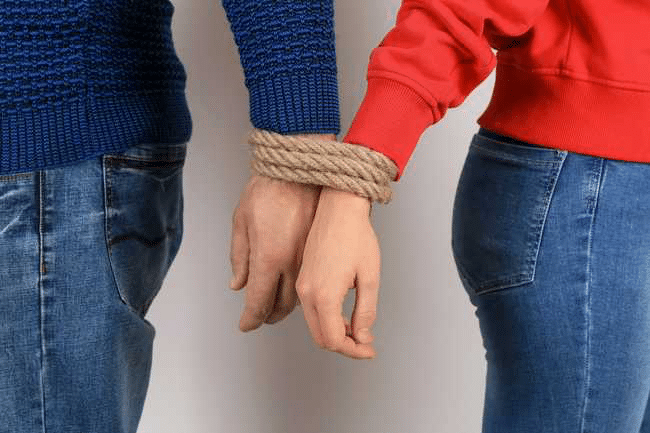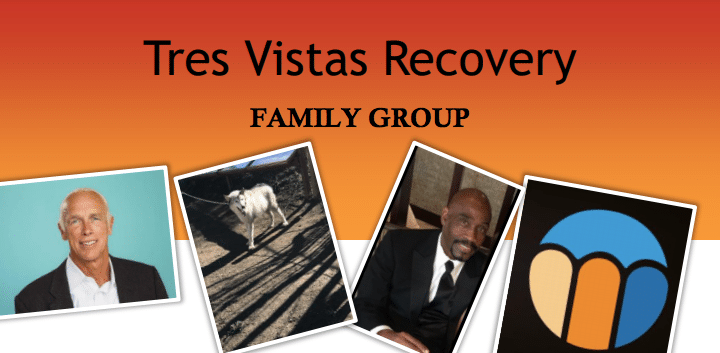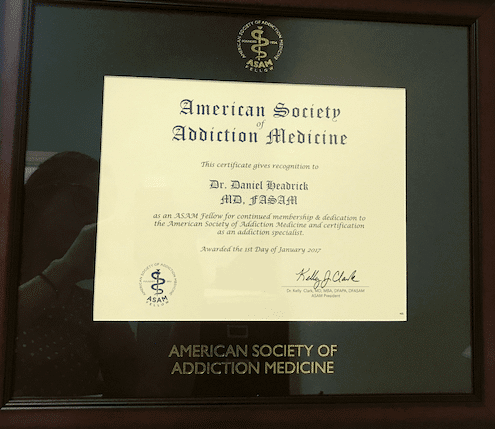
MAT vs. NAD IV Therapy: Which Offers the Best Support for My Detox?
When you have a substance use disorder, your mind and your body have become hijacked by addiction and dependence. The first step toward freeing yourself

When you have a substance use disorder, your mind and your body have become hijacked by addiction and dependence. The first step toward freeing yourself

You’ve broken free from alcohol or your drug of choice and see a bright light at the end of your substance use disorder tunnel. Setting

The numbers surrounding deaths by opioid overdose have risen to all-time highs in recent years in the US — more than 56,500 in 2020 alone. One of

Did you know that about half of people with a substance use disorder also have a mental health issue — and vice versa? The connection between your

To start this blog, we want to point to two salient statistics — one in five people in the United States lives with chronic pain and nearly 10

You’ve been through a traumatic event, and the effects of the experience still haunts you. To help, you turn to drugs or alcohol to help

Like 20 million other people in the United States, you’re struggling with an alcohol or substance use disorder and you long to plug back into the world

Every day, you wake up and think that this is the day that you’re going to stop using, but your resolve quickly disappears as your

Before the COVID-19 pandemic, opioid use was already labeled a crisis in the United States. After lockdowns and isolation, this crisis has greatly elevated — deaths

For years, we used the word addiction to describe someone who’s developed a use disorder when it comes to drugs or alcohol. The fact is

While you may have navigated the holiday season with success — and we congratulate you on this impressive accomplishment — now’s not the time to

They say that a substance use disorder is a disease of the mind, body, and soul, which means a good recovery program addresses all of

When you’re in the middle of a substance use disorder, it’s likely that you isolated yourself or behaved in a way that may have forced

You’ve tried to quit using or drinking, but each time you’re miserable, mentally and physically, thanks to withdrawal symptoms. In fact, these symptoms are often

When you were in the throes of addiction, nearly every aspect of your life was taken over, including your mental, physical, social, behavioral, and emotional

When you develop a substance use disorder, your overriding goal is using, and everything else takes a backseat, including your diet. Now that you’re coming

The relationship between a substance use disorder and your mental health is a close one. Consider that half of those who have a mental illness also

During the late 1990s, pharmaceutical companies assured medical providers that opioid-based painkillers posed no threat when it came to addiction and dependency. They were wrong,

Like most diseases, your substance use disorder didn’t develop overnight, which means that a solid road to recovery will involve several different treatments to address

You watch as your loved one gets sucked into a substance use disorder, and you feel helpless. When they make the decision to get clean,

Let’s begin this blog with a few eye-opening statistics: 21%-29% of those who are prescribed opioids misuse them, and 8%-12% develop an opioid use disorder. As

In 2018, studies suggest that almost 10 million people misused prescription painkillers. Diving a little deeper, researchers have found that 8%-12% of people who misuse opioids go on to

If you’re in recovery, especially early recovery, relapse prevention is one area that always deserves close attention. As you work toward freeing yourself from the

Nearly 225 million adults (70%) in the United States have experienced at least one traumatic event, to say nothing of the millions of children who have been

Do you wake every morning resolved to quit using or drinking, only to find yourself caving into your cravings or withdrawal symptoms before the day

Detoxification, commonly known as detox, is a pivotal phase in addiction recovery. The consumption of drugs or alcohol leads to the accumulation of toxins, building

When it comes to opioid addiction, one of the most daunting challenges is overcoming withdrawal symptoms. These symptoms often act as deterrents, pushing individuals back

Getting sober and staying sober is an extremely tough journey under normal circumstances, but when there’s a national healthcare crisis like the one we’re facing

It is a known fact of how opioids are massively addictive substances. Numbers show how severe opioids abuse has become in the last decade. Approximately

We come across tons of blogs that explore several ways that people are going through recovery struggle during the holidays. We all try hard to

What do milk, eggs, nuts, and strawberries have in common? They’re among the most common food allergies globally, with reactions ranging from mere itchiness to

When we sincerely care for someone, especially in intimate relationships, we naturally focus on their positive qualities and commit to building a bond. This affection,

Do you have that one friend, perhaps once deemed your “best friend,” that’s now lingering in your call log, awaiting your voice? Together, you navigated

In 2017, over 47,000 people died from opioid-related drug overdoses, and 36% had prescription drugs. This alarming scenario reflects a widespread public health issue of

Losing someone you love dearly can be one of the most difficult things to go through as a human being. Experiencing this type of loss

When a person fears for their safety, witnesses a violent or tragic act, or experiences some kind of intense pain, more times than not, that

Mental health and physical health are very closely connected, with each referring to the overall psychological well-being of an individual. It can include the way

Many individuals seeking a respite from their addiction find solace in traveling away from home. Southern California, with its pristine beaches and serene environment, offers

Tres Vistas Recovery Family Group! Every Thursday Night from 6PM-8PM 32301 Camino Capistrano Suite L San Juan Capistrano Ca 92675 What Is Family Group? Safe

Daniel J. Headrick, M.D. was certified in addiction medicine, through examination, by the American Board of Addiction Medicine, Inc. Board certification is the highest level of

Recognizing Commitment to the Field In 1996, the Fellows program was developed to celebrate the exceptional contributions of the leading members in the field of

What’s your passion? Discovering and claiming something you love to do has an amazing effect on your entire life. It’s like a tiny perfect raindrop

Is there a connection between spirituality and recovery? Can faith in a Higher Power help overcome addiction? According to surveys, at least 80 percent of

How to Approach a Loved One About Their Addiction “I think my boyfriend is addicted to drugs.” “I’m afraid my daughter is addicted to drugs.”

GRAVY by: Raymond Carver (1938-1988) “No other word will do. For that’s what it was. Gravy. Gravy, these past ten years. Alive, sober, working, loving,

We are excited to announce our beautiful website is live! The Tres Vistas Recovery Center’s website is a destination as welcoming and warm as our

Dr. Dan Headrick wants your kids to get high. Not that way. A natural high. He wants them to be so high on life itself
Contact
Email:
info@tresvistasrecovery.com
Address:
32301 Camino Capistrano Suite K, & L
San Juan Capistrano, CA 92675
Office Hours
Monday - Friday:
9:00 am - 4:00 pm
Saturday- Sunday:
Closed
Tres Vistas Recovery
We firmly believe that the internet should be available and accessible to anyone, and are committed to providing a website that is accessible to the widest possible audience, regardless of circumstance and ability.
To fulfill this, we aim to adhere as strictly as possible to the World Wide Web Consortium’s (W3C) Web Content Accessibility Guidelines 2.1 (WCAG 2.1) at the AA level. These guidelines explain how to make web content accessible to people with a wide array of disabilities. Complying with those guidelines helps us ensure that the website is accessible to all people: blind people, people with motor impairments, visual impairment, cognitive disabilities, and more.
This website utilizes various technologies that are meant to make it as accessible as possible at all times. We utilize an accessibility interface that allows persons with specific disabilities to adjust the website’s UI (user interface) and design it to their personal needs.
Additionally, the website utilizes an AI-based application that runs in the background and optimizes its accessibility level constantly. This application remediates the website’s HTML, adapts Its functionality and behavior for screen-readers used by the blind users, and for keyboard functions used by individuals with motor impairments.
If you’ve found a malfunction or have ideas for improvement, we’ll be happy to hear from you. You can reach out to the website’s operators by using the following email
Our website implements the ARIA attributes (Accessible Rich Internet Applications) technique, alongside various different behavioral changes, to ensure blind users visiting with screen-readers are able to read, comprehend, and enjoy the website’s functions. As soon as a user with a screen-reader enters your site, they immediately receive a prompt to enter the Screen-Reader Profile so they can browse and operate your site effectively. Here’s how our website covers some of the most important screen-reader requirements, alongside console screenshots of code examples:
Screen-reader optimization: we run a background process that learns the website’s components from top to bottom, to ensure ongoing compliance even when updating the website. In this process, we provide screen-readers with meaningful data using the ARIA set of attributes. For example, we provide accurate form labels; descriptions for actionable icons (social media icons, search icons, cart icons, etc.); validation guidance for form inputs; element roles such as buttons, menus, modal dialogues (popups), and others. Additionally, the background process scans all of the website’s images and provides an accurate and meaningful image-object-recognition-based description as an ALT (alternate text) tag for images that are not described. It will also extract texts that are embedded within the image, using an OCR (optical character recognition) technology. To turn on screen-reader adjustments at any time, users need only to press the Alt+1 keyboard combination. Screen-reader users also get automatic announcements to turn the Screen-reader mode on as soon as they enter the website.
These adjustments are compatible with all popular screen readers, including JAWS and NVDA.
Keyboard navigation optimization: The background process also adjusts the website’s HTML, and adds various behaviors using JavaScript code to make the website operable by the keyboard. This includes the ability to navigate the website using the Tab and Shift+Tab keys, operate dropdowns with the arrow keys, close them with Esc, trigger buttons and links using the Enter key, navigate between radio and checkbox elements using the arrow keys, and fill them in with the Spacebar or Enter key.Additionally, keyboard users will find quick-navigation and content-skip menus, available at any time by clicking Alt+1, or as the first elements of the site while navigating with the keyboard. The background process also handles triggered popups by moving the keyboard focus towards them as soon as they appear, and not allow the focus drift outside of it.
Users can also use shortcuts such as “M” (menus), “H” (headings), “F” (forms), “B” (buttons), and “G” (graphics) to jump to specific elements.
We aim to support the widest array of browsers and assistive technologies as possible, so our users can choose the best fitting tools for them, with as few limitations as possible. Therefore, we have worked very hard to be able to support all major systems that comprise over 95% of the user market share including Google Chrome, Mozilla Firefox, Apple Safari, Opera and Microsoft Edge, JAWS and NVDA (screen readers), both for Windows and for MAC users.
Despite our very best efforts to allow anybody to adjust the website to their needs, there may still be pages or sections that are not fully accessible, are in the process of becoming accessible, or are lacking an adequate technological solution to make them accessible. Still, we are continually improving our accessibility, adding, updating and improving its options and features, and developing and adopting new technologies. All this is meant to reach the optimal level of accessibility, following technological advancements. For any assistance, please reach out to